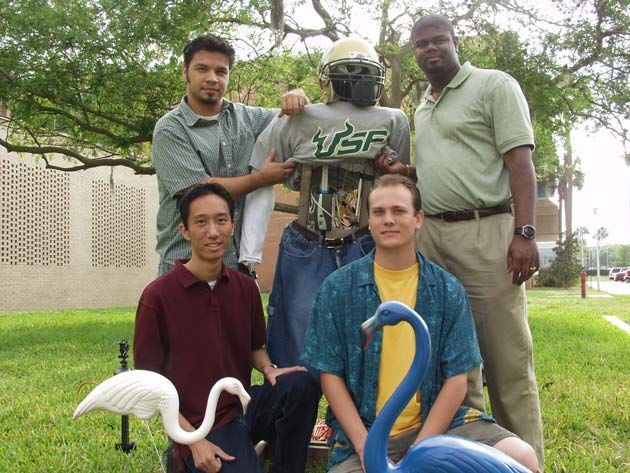Scarecrow Finally Gets a Brain

Crows have probably never been very scared of the stiff, human-looking bags of stuffing put up in cornfields. But a new generation of scarecrow might be a little more effective.
Finally, the scarecrow has a brain.
Students at the University of South Florida have created a scarecrow that foregoes the old straw brain for a head stuffed with sophisticated sensors and computer parts. Erebus, the smart scarecrow, was designed not for a cornfield, actually, but to frighten away birds that would prey on fish in commercial aquatic farms.
"Aquaculture, also known as fish farming, is a vital part of the world's fish production and a $40 million business in Florida," said Ken Christensen, a professor of computer science who led the work. "The outdoor farms are susceptible to predator birds. The students' intelligent scarecrow is designed to benefit farmers while protecting predator birds —many of which are protected species—from harm."
Erebus detects motion and then images the scene. Its micro-PC, an eBox, then processes the imagery to distinguish between real intruders (the birds) and non-threatening objects like farmers. Fish farmers around the world might soon be exchanging their blue overalls for orange outfits; Erebus has been trained to leave bright orange things alone.
It can blast the sound of a gunshot at 120 decibels or spray the birds with an annoying but harmless sprinkler system. Erebus is also a tattletale: It reports the intrusion by email or cell phone.
"The Erebus Scarecrow is not just another motion-detector," said student Albert Ng. "He is capable of intelligent detection, deterrence and can also record the events."
Sign up for the Live Science daily newsletter now
Get the world’s most fascinating discoveries delivered straight to your inbox.
- Real Robots: Vote for Your Favorite
- New Robots Walk Like Humans
- Robot Bartender Pours, Listens
- Can Robots Be Polite?
Robert is an independent health and science journalist and writer based in Phoenix, Arizona. He is a former editor-in-chief of Live Science with over 20 years of experience as a reporter and editor. He has worked on websites such as Space.com and Tom's Guide, and is a contributor on Medium, covering how we age and how to optimize the mind and body through time. He has a journalism degree from Humboldt State University in California.












